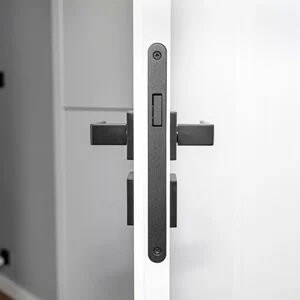How Magnetic Door Lock Secures Your Doors
Jun 4th 2023
Listen to this Article
Magnetic Door Lock
Here is a step-by-step explanation of how magnetic door locks are created:
- Electromagnet: The core component of a magnetic door lock is the electromagnet. It is typically made of a ferromagnetic material, such as iron, and is wound with a coil of wire. The wire coil is connected to a power source that supplies direct current (DC) electricity.
- Power supply: A power supply unit is used to provide the necessary electrical power to the electromagnet. It converts the incoming AC (alternating current) power from the electrical outlet into the required DC power for the electromagnet.
- Coil winding: The wire coil is wound around the ferromagnetic core of the electromagnet. The number of turns in the coil and the gauge of the wire used can vary depending on the desired strength of the magnetic field.
- Armature plate: The armature plate is a metal plate typically made of steel or iron. It is attached to the door frame opposite the electromagnet. When the electromagnet is energized, it generates a magnetic field that attracts the armature plate, causing it to be pulled toward the electromagnet.
- Mounting: The electromagnet is mounted on the door frame, aligned in close proximity to the armature plate. The armature plate is aligned in a way that allows it to come into contact with the electromagnet when the door is closed.
- Wiring and control: The electrical wiring connects the power supply, the electromagnet, and any control systems such as access control devices or keypads. These control systems allow authorized individuals to activate or deactivate the lock.
- Locking and unlocking: When the power supply sends an electrical current to the electromagnet, the coil becomes magnetized, creating a strong magnetic field. This magnetic field attracts the armature plate, effectively locking the door. To unlock the door, the electrical current to the electromagnet is interrupted, causing the magnetic field to dissipate and release the armature plate.
Magnetic door locks are popular for their reliability, strength, and ease of use. They are commonly used in various applications, including commercial buildings, institutions, and access control systems, where security and convenience are essential.
Jun 4th 2023

